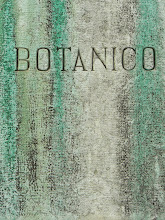 Sir Stamford Raffles, the founder of Singapore and a keen naturalist, established the first botanical and experimental garden on Government Hill (Fort Canning Hill) in 1822, shortly after his arrival in Singapore. He aimed to introduce cultivation of economic crops such as cocoa and nutmeg. However, without a full-time salaried director and sufficient funding, the garden languished and was closed in 1829, after Raffles' death.
Sir Stamford Raffles, the founder of Singapore and a keen naturalist, established the first botanical and experimental garden on Government Hill (Fort Canning Hill) in 1822, shortly after his arrival in Singapore. He aimed to introduce cultivation of economic crops such as cocoa and nutmeg. However, without a full-time salaried director and sufficient funding, the garden languished and was closed in 1829, after Raffles' death.The Gardens at its present site was founded in 1859 by an Agri-Horticultural Society. Planned as a leisure garden and ornamental park, the Society organised flower shows and horticultural fetes. In 1874, the Society handed over management and maintenance of the site to the government. The scientific mission of the Gardens evolved when the colonial government assumed management and deployed Kew-trained botanists and horticulturists to administer the Gardens.
It is fair to say that the history of the Gardens is in many respects the history of its dedicated administrators. The Gardens' first Director, Henry Nicholas Ridley, came to the Gardens in 1888 and worked tirelessly for the next 23 years to usher the Gardens into the twentieth century and its most productive period historically. Ridley's zealous persistence in persuading Malaya's planters to grow rubber trees earned him less than flattering nicknames such as "Mad Ridley" and "Rubber Ridley". During the 1890s and early 1900s, Ridley devised successful propagation methods and also discovered a way to harvest commercial quantities of latex without harming or killing the trees. He advocated the large-scale cultivation of rubber in Malaya. Planters in Malaya largely ignored Ridley until their coffee plantations were devastated by disease and they desperately required a new cash crop. During this time, demand for rubber soared as the automobile industry boomed. As Ridley had turned the Gardens forest clearings and waste land over to rubber, the Gardens had a ready source of seed supply when the rubber rush came. The Gardens' revenue multiplied greatly as the region became a major market for the rubber trade. The plants at the Botanic Gardens became the basis for Southeast Asia's rubber industry, an industry that generated fortunes.
Beginning in 1928, Professor Eric Holttum, Director of the Gardens from 1925 - 1949, set up laboratories and conducted the first experiments in orchid breeding and hybridisation. The results of these experiments, free flowering and hardy orchid hybrids laid the foundation for the multi-million dollar cut flower industry. Since then, outstanding hybrids have been cultivated in the Gardens and received recognition worldwide.
By the mid 1960s, the Gardens was taking a leading role in the greening of Singapore. To meet the need for urban landscapes and recreational areas, the Gardens' staff became involved in supplying planting material and in plant introduction to increase the variety and colour in road side and park plantings.
Beginning in 1928, Professor Eric Holttum, Director of the Gardens from 1925 - 1949, set up laboratories and conducted the first experiments in orchid breeding and hybridisation. The results of these experiments, free flowering and hardy orchid hybrids laid the foundation for the multi-million dollar cut flower industry. Since then, outstanding hybrids have been cultivated in the Gardens and received recognition worldwide.
By the mid 1960s, the Gardens was taking a leading role in the greening of Singapore. To meet the need for urban landscapes and recreational areas, the Gardens' staff became involved in supplying planting material and in plant introduction to increase the variety and colour in road side and park plantings.
In 1973, the Botanic Gardens merged with the Parks and Trees branch of the Public Works Department, which became the Parks and Recreation Department.
In 1988, a big leap forward occurred when Dr Tan Wee Kiat became Director of the Gardens. While the Gardens remained committed to its role in making Singapore a Garden City and meeting recreational needs, renewed focus on being a leading international institution for tropical botany was established. Excellence in botanical research, education programmes and preservation of the cultural heritage of the Gardens were emphasised. Under Dr Tan's direction, the 3-hectares National Orchid Garden, a major tourist attraction today, was established.
In June 1990, Singapore Botanic Gardens came under the management of the newly formed National Parks Board. The Gardens embarked upon a comprehensive improvement programme to bring it to the forefront of botanical and horticultural activity by the 21st century. Dr Tan became the Chief Executive Officer of this new National Parks Board.
In July 1996, the Ministry of National Development merged the National Parks Board and the Parks and Recreation Department into a single authority to look after the greening and beautification of Singapore. The name of the authority, a statutory board remains as National Parks Board. Dr Chin See Chung took over the challenging role of Director of the Gardens. Besides continuing the Gardens' traditional roles in research, education and conservation, Dr Chin is steering the Gardens on a long term upgrading programme to provide better public facilities and amenities. New attractions, such as the Ginger Garden, Evolution Garden, Coolhouse and the Children's Garden are being added to keep the Gardens relevant as a leading destination. Today, under the continued stewardship of Dr Chin, the Gardens is geared towards entrenching itself as a tropical botanical institution of international renown, a key tourist destination and a flagship park. in http://www.sbg.org.sg/



Sem comentários:
Enviar um comentário